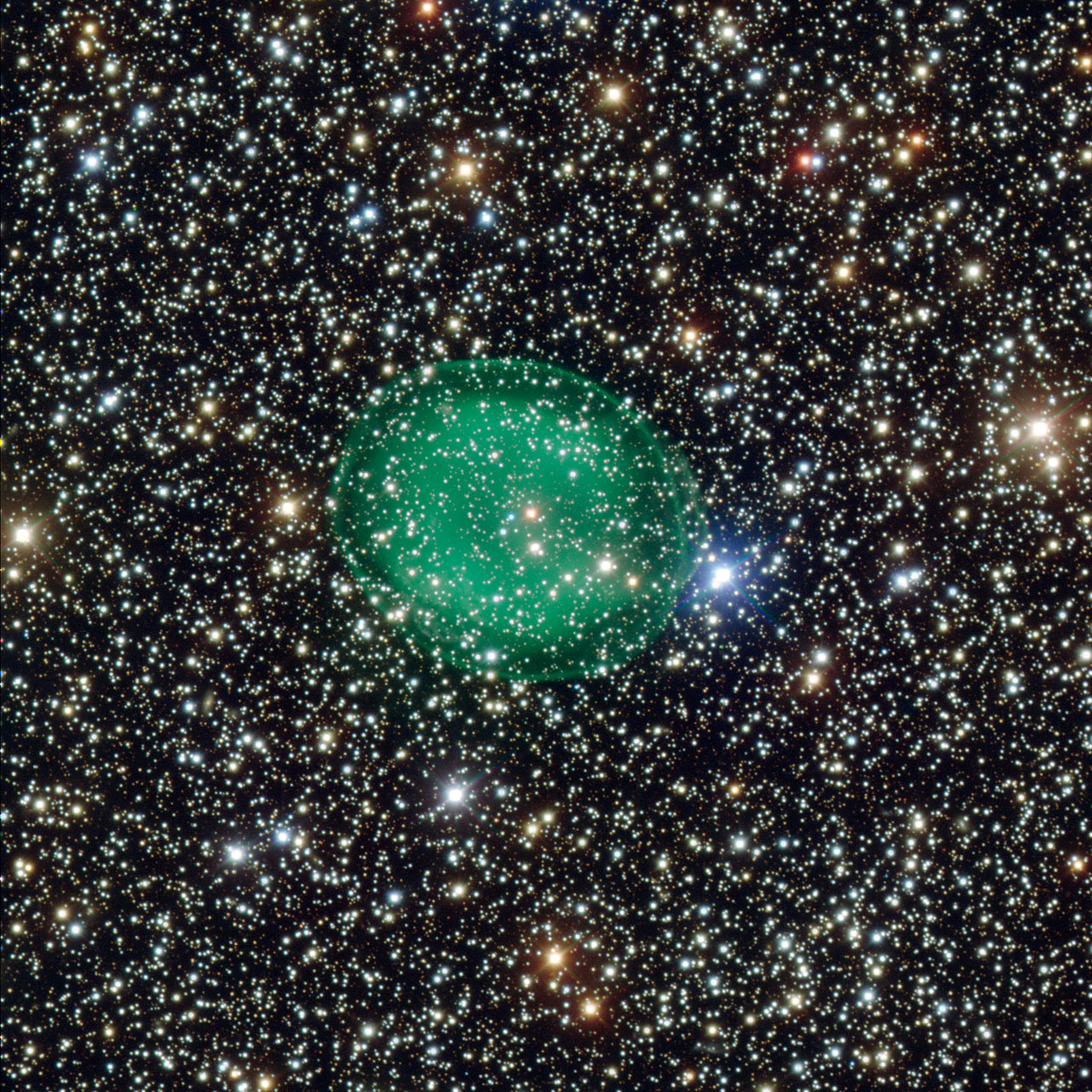New Photo Reveals 'Ghostly' Green Nebula in Deep Space

An amazing new photo from a telescope in Chile has captured the most detailed view yet of a green glowing blob 3,300 light-years away from Earth.
The new image, released today (April 10) by the European Southern Observatory, shows the planetary nebula IC 1295 like it has never been seen before. This picture, which ESO scientists dubbed "ghostly," marks the first time the nebula has been imaged such unprecedented detail.
"It has the unusual feature of being surrounded by multiple shells that make it resemble a microorganism seen under a microscope, with many layers corresponding to the membranes of a cell," officials from the European Southern Observatory wrote in a statement.
ESO offiials released a video tour of the nebula as well.
The formation of a planetary nebula marks one of the final chapters in the life of a star like the Earth's sun. Once the yellow star depletes its fuel, it collapses in on itself creating huge shells of gas — like the green ones that appear in the new photo.
The IC 1295 nebula resides in "the shield" constellation, Scutum, and the bubble-like nebula's greenish tint comes from ionized oxygen particles.
Gas like the ionized oxygen is "belched" out of the nebula because fusion reactions are no longer stable in the dying star's core. This gas expulsion creates the glowing clouds that envelop the bright stars that also populate that part of the sky.
Breaking space news, the latest updates on rocket launches, skywatching events and more!
"At the center of the image, you can see the burnt-out remnant of the star’s core as a bright blue-white spot at the heart of the nebula," officials from the ESO wrote. "The central star will become a very faint white dwarf and slowly cool down over many billions of years."
Scientists using ESO's Very Large Telescope took the new photo of IC 1295. By combining three different exposures using a red, green and blue filter, the astronomers were able to create the stunning new nebula photo, showing the object in a new light.
The Very Large Telescope is located in the Atacama Desert in Chile and is the "most productive individual ground-based facility," according to the ESO.
Follow Miriam Kramer @mirikramer and Google+. Follow us @Spacedotcom, Facebook and Google+. Original article on SPACE.com.

Miriam Kramer joined Space.com as a Staff Writer in December 2012. Since then, she has floated in weightlessness on a zero-gravity flight, felt the pull of 4-Gs in a trainer aircraft and watched rockets soar into space from Florida and Virginia. She also served as Space.com's lead space entertainment reporter, and enjoys all aspects of space news, astronomy and commercial spaceflight. Miriam has also presented space stories during live interviews with Fox News and other TV and radio outlets. She originally hails from Knoxville, Tennessee where she and her family would take trips to dark spots on the outskirts of town to watch meteor showers every year. She loves to travel and one day hopes to see the northern lights in person. Miriam is currently a space reporter with Axios, writing the Axios Space newsletter. You can follow Miriam on Twitter.

